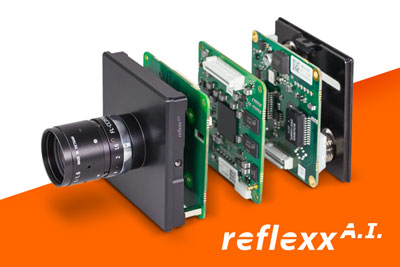Don't overlook them!
Overpressed finishes are anything but harmless. Affected bottles should thus definitely be detected and rejected before they are filled and closed. HEUFT has specially adapted detection technologies to offer for this – and the right combination of artificial and human intelligence during image processing.
The philosophy is simple: this which the empty bottle inspector cannot detect is not a fault. And that what the AI does not assess as critical on its own is not critical.
But unfortunately it is wrong! Because, as we all know, the devil is in the details. Thus detection technologies are needed that find even the smallest deviations. And a truly intelligent image processing that always competently assesses these as harmless or risky.
Critically assessing critical errors
Leaving the latter completely to a neural network that makes its own judgments from a "black box" using deep learning, by contrast, is anything but advisable. The danger is too high that the AI draws the wrong conclusions and evaluates critical things as uncritical.
The best example: bottle finishes with glass protruding upwards from the inner edge. Such overpressed finishes, which are sometimes produced in the glassworks, often cause sharp-edged chips and splinters on the sealing surface when the bottle is capped. The fact that glass fragments can also get into the bottle during this process and endanger the health of the end consumer is clear to anyone with a little knowledge of the subject.
Intelligently preventing recalls
A good 30 years ago, a large international brewing group had to recall a total of 17 million containers thus. It is consequently not a good idea to "deliberately" not reject overpressed-finish bottles because they are not so easy to recognize and the AI mistakenly considers them to be uncritical. It is much more important to reliably detect and competently classify every single one of these critical finish faults even at high line speeds of up to 78,000 bottles per hour. HEUFT technologies make both possible:
- Our unrivalled precise method for the color finish inspection makes the inconspicuous material surpluses visible in the first place – and thus creates the basis for the AI to evaluate anything at all. It's not just high-resolution cameras that are important here, but above all cleverly coordinated lighting scenarios, perspectives and other special optical technologies, including bright and dark field detection.
- Our smart HEUFT reflexx A.I. real-time image processing ensures the correct evaluation of the objects which have become recognizable in this way. It does not rely on artificial intelligence alone for this. Rather it also includes human intellect, human knowledge and human experience in the object evaluation of the machine learning – for example the empirical knowledge that overpressed finishes can indeed cause contamination of the bottle concerned with dangerous glass splinters and have in fact already triggered massive recall actions.
Avoiding misconceptions
For all-surface empty bottle inspectors with the HEUFT reflexx A.I. such material surpluses at the bottle finish are thus by no means harmless deviations which can simply be overlooked. And the containers affected by this are by no means among those which do not need to be rejected. The combination of artificial and human intelligence effectively protects against such misjudgments – and, in order to sustainably reduce the false rejection rate, only considers what is really uncritical to be uncritical.




